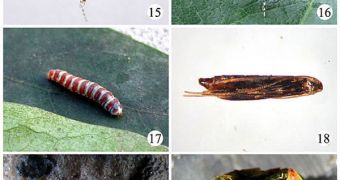Scientists from the University of California in Berkeley (UCB) discovered in a recent study that species which are dependent on each other for their very survival can become separated and then reunite over vast distances. At times, these can cover several thousand miles.
For the new study, the research team focused on the leafflower trees (Glochidion) and leafflower moths (Epicephala). The two species live in symbiosis, which means that their company is beneficial to the other. In parasites, this connection only goes one way.
What the team found was that both species manage to establish themselves independently on islands in the South Pacific and then resume their symbiotic relationship as if nothing had ever happened.
Details of the new study were published in the latest issue of Biology Letters, a journal edited by the Royal Society. As soon as the paper appeared, it puzzled the biological community, and for very good reasons, too.
Evolutionary biologists know that species which are extremely specialized to an environment or food web cannot leave its settings without risking death. The case is even more severe for species living in symbiotic relationships, which are known as specialized mutualists.
Symbiotic species that display resilience when faced with disturbance are extremely rare, which is why experts have always considered that instances where they could colonize remote locations were highly improbable. Yet, the two species the UCB team analyzed appeared to be one of the select few.
“We found an unusual example of a mutualism that can be broken apart and actually puts itself back together,” explains UCB Department of Environmental Science, Policy and Management graduate student David Hembry. He is also the lead author of the new study.
“Mutualisms are important because they are fundamental to ecosystem functioning. This is one reason they have received so much attention from biologists and environmental scientists in recent years,” the expert goes on to say.
In their specific circumstance, leafflower moths and trees get along just fine because the insects are the only species capable of pollinating the plant. For its services, the moth is allowed to feast on a fraction of the plant's seeds.
“It would seem difficult for the trees to successfully colonize these islands if they were dependent on the moths.” Hembry adds. He studied these aspects in the lab of the Essig Museum of Entomology director, UCB professor Rosemary Gillespie.
“If a seed arrived on a new island with a moth caterpillar inside, the caterpillar would mature into a moth in a few weeks, but the seed would need years before it could grow into a mature tree with flowers. The plants and moths would have to colonize the islands separately,” the student concludes.

 14 DAY TRIAL //
14 DAY TRIAL //